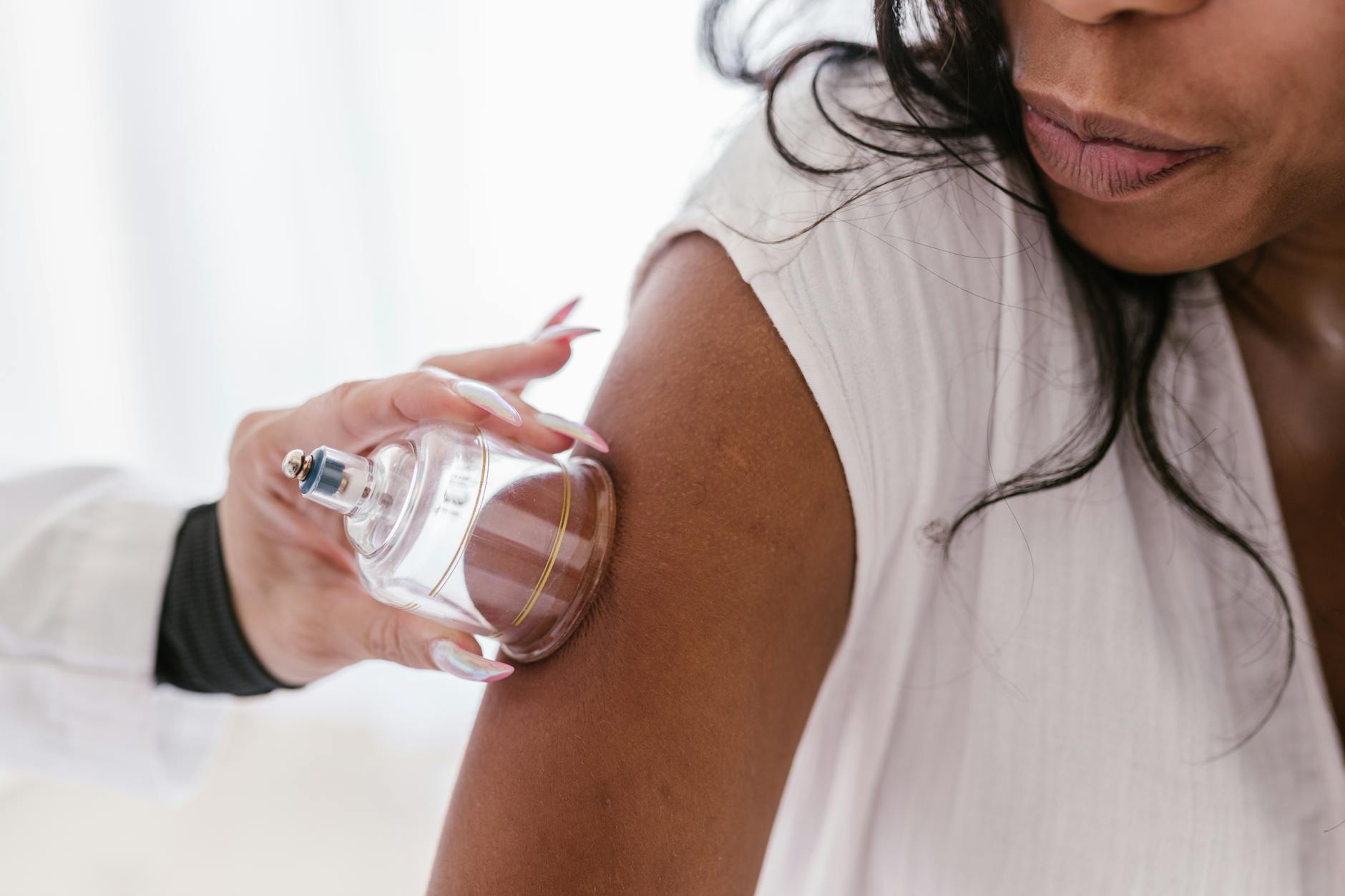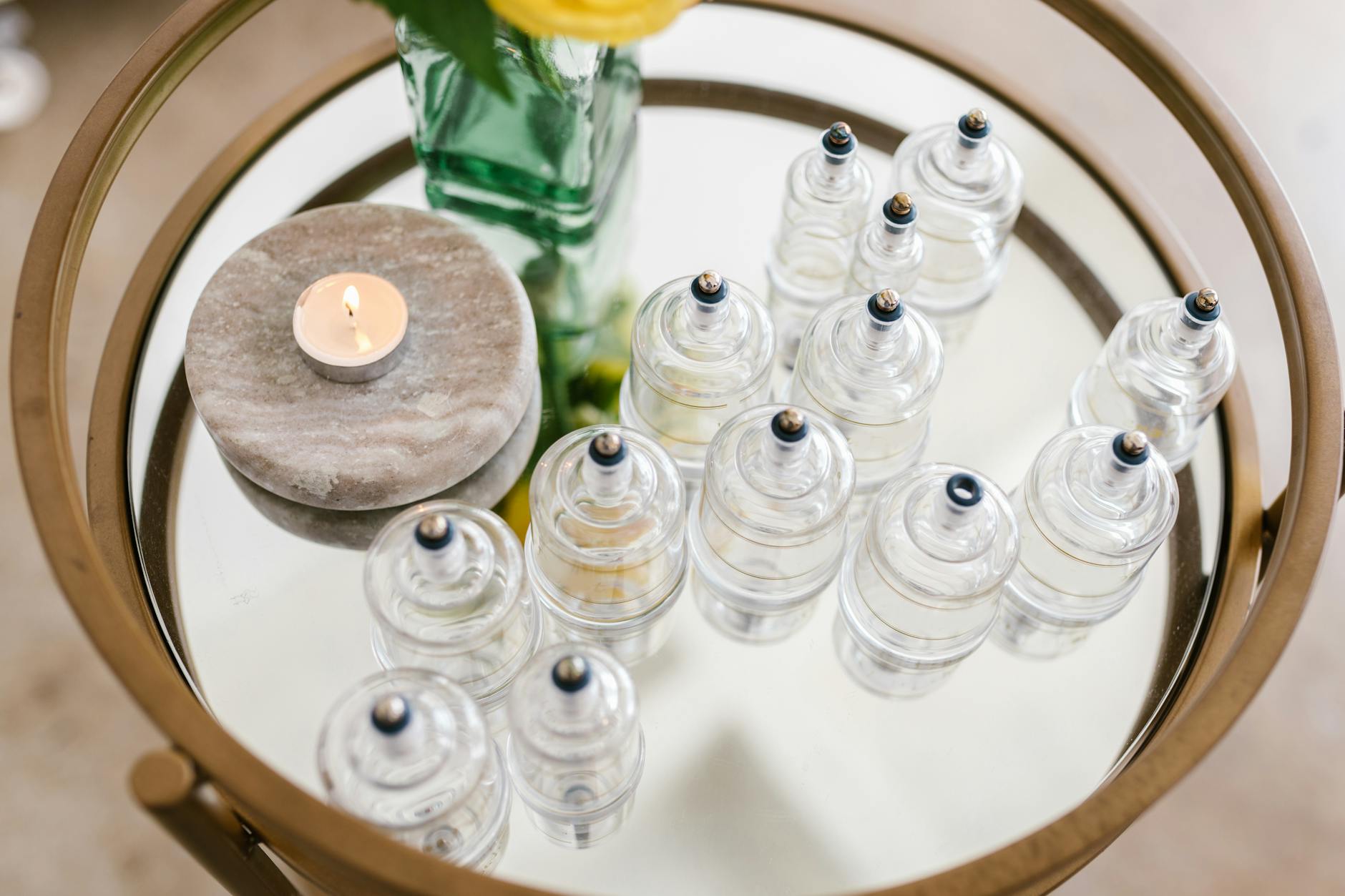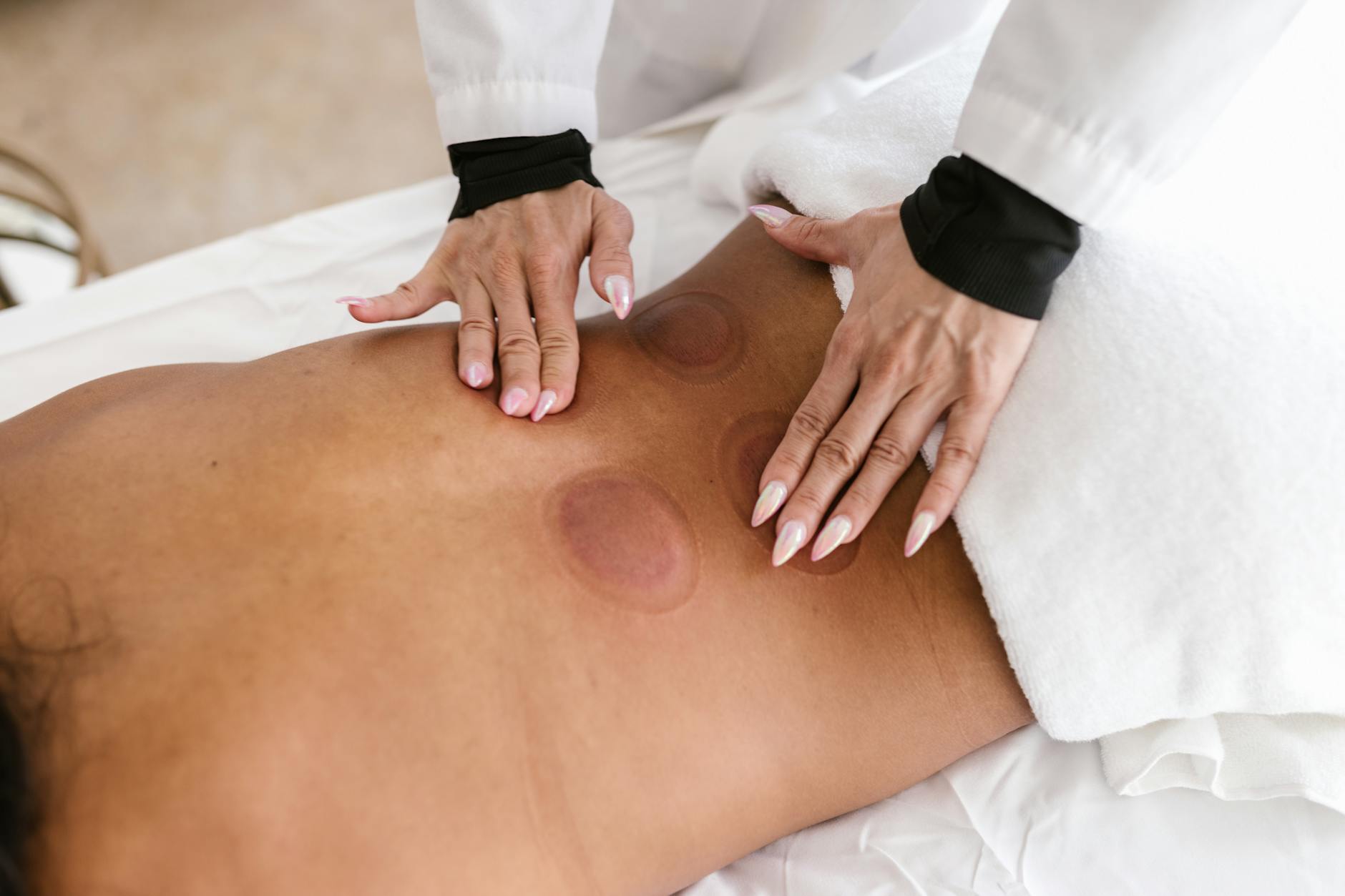Cupping is a pain therapy that, like acupuncture, originated in traditional Chinese medicine (TCM). Experts claim it has been utilized since the fourth century.
Fast forward around 1,700 years and cupping has been gaining popularity and attention from some Western medical practitioners. When American swimmer Michael Phelps appeared at a 2016 Olympic event in Rio with circular hickey-like marks all over his back, awareness skyrocketed.
While Western medicine has not explored cupping extensively, there is some study from China on cupping as a fibromyalgia treatment, and early results look to be promising.
What is cupping therapy?
The classic method of cupping uses little glass globes that resemble the mini fish bowls that pet stores keep bettas in. The practitioner places a little amount of flammable material (such as rubbing alcohol or herbs) inside the cup and sets it on fire. This depletes the oxygen within the cup.
The practitioner then turns the cup upside down and lays it on your skin. The air inside the cup then cools, resulting in a vacuum. The vacuum causes your skin to expand inside the cup, causing blood vessels to enlarge and leaving the trademark round suction imprints.

Working with glass and flame is not without risks. Some practitioners now utilize plastic cups with pumps instead of globes and combustible materials. To activate suction, simply place the cup on your skin and squeeze the pump several times. The effect remains the same but without the risk of burns.
Wet cupping is a type of cupping therapy that includes making small wounds in the skin and then placing cups over the cuts to drain blood out during the process. Dry cupping is a type of cupping that does not involve cutting the skin.
According to TCM, the benefits of cupping therapy include pore opening, blood flow stimulation, blood filtration, and qi (pronounced “chee”) balancing, which is the movement of energy through your body. It is frequently coupled with acupuncture.
In China, cupping has long been used to cure a range of ailments, including
- Asthma
- Bronchitis
- Arthritis and various forms of pain
- Digestive difficulties
- Depression
In the Western world, there is currently no research on the physiological effects of cupping or what conditions it may be useful for.
Cupping for Fibromyalgia.
The first Chinese study on cupping as a fibromyalgia treatment was published in 2006. In the treatment group, researchers used acupuncture, cupping, and the medication amitriptyline, while the control group received only Amitriptyline.
They determined that the acupuncture+cupping+drug group performed much better than the drug-only group in terms of pain and sadness.
A larger study in 2010 put people into three groups:
- Acupuncture+cupping+amitriptyline
- Acupuncture+cupping
- Amitriptyline only
Acupuncture + cupping Amitriptyline alone
According to the researchers, group 1 performed the best, indicating that both the medication and the TCM were effective and could complement one another.
A 2010 review of the literature on TCM for fibromyalgia found positive outcomes with cupping but recommended that TCM therapies be investigated in larger studies with better designs than the early work.
A 2011 study examined cupping alone. Thirty fibromyalgia patients received cupping therapy for 10 minutes per day for 15 days. The researchers examined pain and tender-point counts before, throughout, and two weeks after therapy.
They determined that cupping reduced both fibromyalgia pain and the number of tender points and that their data supported a placebo-controlled clinical trial.

What are the different types of cupping therapy?
Acupuncturists choose different types of cupping based on their treatment goals. There are several varieties of cups. Most cups are made of glass. A thousand years ago, cups were fashioned of bamboo, clay, or animal horns.
Classic cupping: Ann Michelle Casco, L.Ac., a traditional Chinese medicine practitioner and acupuncturist, refers to the classic cupping technique as ba guan zi, which means fire or dry cupping. This entails placing the cup over an ashi (painful spot) or an acupuncture point on an energy meridian. The cups are left in place for 5 to 20 minutes, depending on the individual’s condition. A typical treatment regimen consists of 4-6 sessions spaced out over 3-10 day intervals.
Sliding cups: This technique is traditionally used to treat pain and muscle spasms in vast muscle groups of the back. Massage oil is administered to the skin before the cups are put, allowing them to slide smoothly across the skin’s surface.
Air cupping is an alternative to fire cupping in which a handheld suction pump is used to expel air from the cups, resulting in a vacuum without heat. Some clinical study from China suggests that this advancement in cupping technology is more comfortable for patients.
Wet Cupping: Wet cupping is an acupuncture treatment that combines cupping with bleeding. A lancet is used to pierce the skin before applying the cup, causing a little amount of blood to flow out of the area. This treatment is supposed to help eliminate interior toxins. This technique is used by TCM practitioners in China for “cooling” inflammatory disorders.
Is Cupping Right For You?
Cupping is typically regarded as a safe treatment when administered by a skilled practitioner, and there have been no reports of increased dangers associated with cupping for patients suffering from fibromyalgia. Acupuncturists and massage therapists are frequently responsible for this procedure.
You should avoid cupping treatments if you have a high fever, seizures, or bleed easily. It should also not be used on irritated skin.
Many patients with fibromyalgia experience allodynia, which implies that their nervous system converts typically non-painful feelings into pain. As a result, you may feel more discomfort than others while cupping. You may want to ensure that your practitioner does not place cups on regions where you commonly get allodynia.
If you wish to attempt cupping, see your healthcare physician first. If you decide to go ahead with it, make sure you obtain it from a reliable practitioner.
Pay attention to how you feel in the days following a cupping treatment to determine whether it causes any symptoms.
Keep in mind that cupping looks to be a useful supplemental therapy. You shouldn’t expect it to replace your drugs or other therapies. Instead, think of it as another weapon in your fibromyalgia treatment armory.

What are the side effects of cupping therapy?
Cupping usually leaves markings on the skin. This is due to bringing blood to the surface, much like a bruise. Cupping may not be the ideal therapeutic option for people with bleeding problems, such as hemophilia, or those using anticoagulants. Before having cupping, people with these diseases should consult with their acupuncturist or doctor about the benefits and drawbacks of the treatment.
Cupping should not be used on skin that has current inflammation, burns, infection, or open wounds. Although discomfort may occur, it should not be considered a side effect. Moderate, transitory discomfort is normal while stagnation is eliminated and connective tissue and muscles are released.
